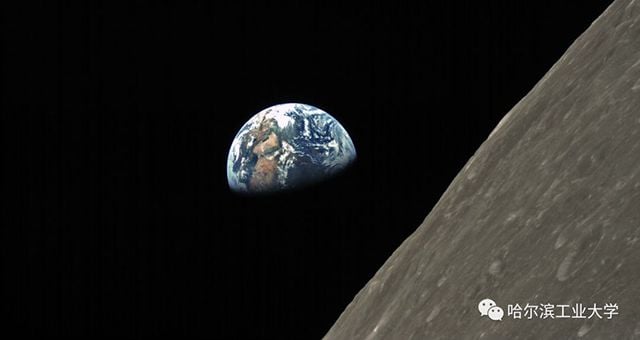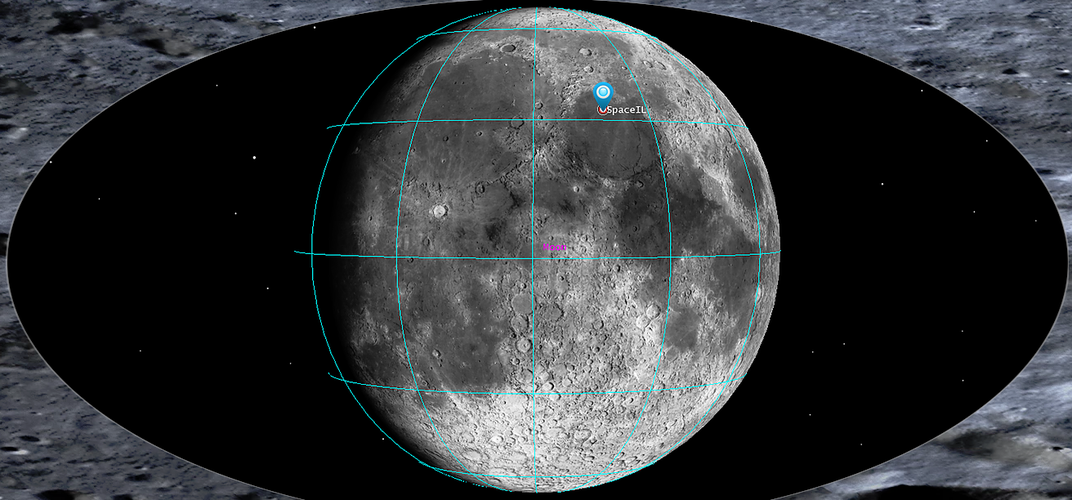2019: What’s Ahead in Space
First-time exploration of the Kuiper Belt, and a race to the moon.
/https://tf-cmsv2-smithsonianmag-media.s3.amazonaws.com/filer/d9/03/d9037158-f619-4b5f-b3b8-d69a595f94d5/access_arm_dragon.jpg)
In 2018 the space program often seemed stuck in low gear, with delays to NASA’s Webb Space Telescope, slips in the schedule for new commercial astronaut taxis, and yet another re-shuffling of plans for human spaceflight. At times it felt like all talk and Powerpoint slides.
Now the world’s launch pads and mission control rooms are gearing up for some real excitement.
The action starts right away, exactly 33 minutes after the ball drops in Times Square. That’s when NASA’s New Horizons is due to fly past a distant rock nicknamed Ultima Thule (officially, 2014 MU69), the first Kuiper Belt Object—not counting Pluto—to be visited by a spacecraft. We won’t get word of the flyby until 10 a.m. or so Eastern time on January 1, partly due to the six hours it takes for the signal to reach us from four billion miles away.

New Horizons Principal Investigator Alan Stern has taken to calling the Kuiper Belt a “third zone” of the solar system, beyond the four inner rocky planets and four gas giants known for centuries. The region is populated mostly by icy leftovers from the formation of the planets some 4.5 billion years ago. Never having seen one of these small, primitive objects up close, scientists know little about the more than 2,000 Trans-Neptunian Objects cataloged to date, beyond their locations, spectral colors, and rough sizes.
Ultima Thule (roughly translated as “unexplored territory,” and pronounced Thew-lee, according to the OED) was only discovered in 2014, and most of what scientists know about it is thanks to the Hubble Space Telescope. It’s as dark as potting soil, reddish in color, and, at roughly 23 miles wide, about the same size as Pluto’s small moon Nix. It appears to be elongated rather than round, and would surprise no one if it turns out to be peanut-shaped, like two rocks mashed together.
Other than that, scientists aren’t certain what to expect. Not every NASA science mission is pure discovery, but this one is.
The best images will come down on January 2 and 3—that is, the best until very hi-res stuff starts arriving later in the month. Provided they turn out as expected (not guaranteed, since the light will be even dimmer than at Pluto, only half a percent of the illumination we receive on Earth), they should show more detail than New Horizons’ best pictures of Pluto. The flyby distance at Ultima Thule is just 2,200 miles, compared to 7,700 miles at Pluto.
To the Moon!
Fifty years after the Apollo lunar landings, the moon is once again a hot destination. Except this time it will be robotic landers instead of astronauts exploring the surface, and the United States won’t be going alone, or even first.
On January 2 or 3 (the exact timing has not been announced), China’s Chang’e-4 is expected to make the first-ever soft landing on the moon’s far side, which we never see from Earth due to tidal locking, and never saw, period, until the Soviet Luna 3 flyby in 1959.
The lander and its small companion rover are nearly identical copies of the Chang’e-3 spacecraft that touched down on the near side in December 2013. One critical addition is a separate radio relay satellite, called Queqiao, stationed in a wide orbit centered on the Earth-Moon L2 Lagrange point, where it can keep the far-side lander and Earth stations in constant communication. Lunar mission planners—particularly those who envision extended operations at the moon—have long wanted such a far-side relay. Now China has one.

The intended landing spot is in the South Pole-Aitken Basin, the largest and oldest impact scar on the moon, in a crater called Von Kármán. To land on the rocky surface without guidance from Earth, Chang’e-4 will use automatic hazard avoidance to find a safe, boulder-free spot—a technology proven on Chang’e-3, and one that NASA has yet to demonstrate.
Along with the same kind of cameras, spectrometer and radar that Chang’e-3 carried, the lander is packing a new instrument called the Low Frequency Spectrometer. Astronomers have long dreamed of a “radio quiet” observatory on the lunar far side, shielded from interfering transmissions from Earth. Chang’e-4’s will be the first, operating in conjunction with a Dutch-Chinese instrument on the L2 relay satellite to survey the low-frequency radio sky, among other science goals. It’s a simple instrument, but a landmark step in the astronomical use of the moon.
Sometime in early spring, India hopes to become just the fourth nation (after the Soviet Union, United States and China) to land a spacecraft on the moon. Chandrayaan-2 is scheduled for a January 30/31 launch, although that date may well slip. India placed the Chandrayaan-1 spacecraft in orbit around the moon 10 years ago, and followed with a Mars orbiter in 2014.
Chandrayaan-2 will be a significant achievement for the nation’s space program. While an orbiter maps the lunar surface from 60 miles up, a 3,200-pound lander called Vikram (for Vikram Sarabhai, founder of the Indian Space Research Organization) will head for the surface, toting a small (60-pound) rover modeled after the Sojourner rover NASA sent to Mars in 1997. Vikram also will make an autonomous landing, about two months after leaving Earth.
As it roams around the landing site near the moon’s south pole, the rover will use a pair of miniature, black-and-white navigation cameras to avoid obstacles like rocks and craters. The lander and rover were designed to last just two weeks, or one lunar day. Surviving the cold lunar night would be a tougher engineering challenge.
The current schedule calls for Chandrayaan-2 to make 2019’s second moon landing, but that may not be how things play out. Even though the Google Lunar X-Prize ended this year without a winner, several of the competing teams are going forward with missions anyway. The first privately funded venture to reach the moon, if its February 13 launch date on a SpaceX rocket holds, will be the Israeli SpaceIL team, who seemed like a long-shot when they entered the race in 2011. With large donations from billionaires Morris Kahn and Dr. Miriam and Sheldon Adelson, and technical and financial support from the Israeli space agency and Israel Aerospace Industries (IAI), SpaceIL hopes to create an Israeli "Apollo Effect” to boost science and technology education in the country.
Following the Falcon launch, SpaceIL will raise its orbit around Earth in a series of steps until its highest point reaches the moon. Like Chandrayaan-2, the lander will take more than two months to go from launch to landing. So look for a touchdown on the northern edge of the Sea of Serenity in mid- to late April.

Five feet high and and six and a half feet in diameter, the Beresheet lander (“Genesis” in Hebrew) is about the same size as the Insight spacecraft NASA recently landed on Mars. Its goals are modest: land safely, take some pictures and video, leave behind a time capsule that includes a bible and an Israeli flag.
NASA will be lending some tracking support from its Deep Space Network antennas in exchange for data on the lunar magnetic field collected by an instrument on the lander.
The U.S. space agency will be watching all this with great interest. New administrator Jim Bridenstine is itching to get NASA’s own lunar lander program going, which will hitch rides on commercial vehicles, including some built by other Lunar X-Prize veterans. Most of NASA’s work on this Commercial Lunar Payload Delivery Service has involved laying the contractual groundwork. But we’ll start to see more tangible progress in 2019, and a flurry of commercial landings by 2020.
Expect also to see progress this year on the agency’s proposed “Gateway” outpost for human lunar missions. This mini-space station placed in a looping orbit in the Earth-moon neighborhood has been Plan A for NASA for half a decade now, even though Congress has yet to fully commit to it or appropriate all the necessary funds.
Here’s how NASA sees “cislunar space” developing in the coming years:

The first piece of Gateway to launch will be its Power and Propulsion Element; the agency hopes to pick contractor(s) to start work on the PPE as soon as March. By summer, it hopes to solicit proposals for the station’s living and working modules (astronauts would visit Gateway only intermittently rather than live there permanently, as on the space station). So 2019 should be the year Gateway starts to become real.
New space taxis to make their debut
Human spaceflight was supposed to get off to a quick start this year, too. Then politics intervened. It’s hard to say just how much the partial shutdown of federal government agencies, including NASA, has slowed momentum toward the first test flights of the new astronaut “taxis” built by SpaceX and Boeing, but it certainly hasn’t helped. In early January NASA said the planned SpaceX “Demo-1”—an uncrewed test of the new Crew Dragon vehicle—would slip (again), from January 17 to no earlier than February.
Whenever launch day arrives, here’s what will happen: A SpaceX Falcon 9 rocket with the new Crew Dragon vehicle on top will lift off from Pad 39-A at Cape Canaveral, the same site from which Armstrong and Aldrin departed for the moon 50 years ago. No astronauts will be on board for this checkout of all the hardware and procedures needed to reach the space station, dock, stay attached for two weeks, then return to an ocean landing. Allowing for more schedule slips, a Demo-2 flight will follow this summer. NASA astronauts Bob Behnken and Doug Hurley will be on board for that one (Trivia note: Hurley also flew on the last spacecraft launched from Cape Canaveral, space shuttle Atlantis, in 2011).
Boeing plans to follow suit with its Starliner vehicle, with a similar uncrewed test in March and a second flight with a crew of three onboard in August. Two of them, Eric Boe and Nicole Mann, will be NASA astronauts. The third, Chris Ferguson, works for Boeing (and was Hurley’s commander on that 2011 Atlantis flight).
It isn’t entirely accurate to call this “commercial spaceflight,” if you go by the normal rules of private business. NASA paid for most of the development of these new vehicles. Still, SpaceX and Boeing will own them, and will be free to sell rides to other customers (if there are any). And the level of NASA oversight will be dramatically less than it was when contractors built Apollo capsules and space shuttles to the agency’s exact specifications. So this really does signal the beginning of a new era, where NASA buys launch services rather than running the service itself.
Also…
- Battle of the behemoths: Virgin Galactic’s LauncherOne “flying launchpad” is supposed to make its debut this year, and the late Paul Allen’s ginormous StratoLaunch is due to take to the air for the first time.
- Lost in the commotion over New Horizon’s visit to Ultima Thule is the news that a NASA spacecraft called OSIRIS-REx has just entered orbit around an asteroid called Bennu, the smallest object ever orbited by a spacecraft. Up-close investigation will continue in 2019.
- The year will end as it began, with a Chinese landing on the moon. Chang’e-5 will be the first lunar sample return since the American Apollo and Soviet Lunokhod missions of the 1970s.

